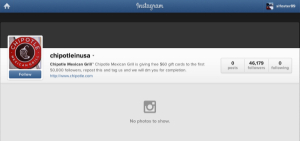Sam Foster ⬥ 20 November
In the last decade, social media has become a ubiquitous part of our everyday lives, here in the U.S. and in most parts of the world.
Over 2 billion people are now actively using social media each month, a staggering number given that a decade ago, social media sites like Friendster and MySpace were only celebrating having mere millions of users.
As the number of social media platforms and users continues to grow, social media branding protection needs for businesses exponentially grows with it.
From Melbourne to Memphis to Mumbai, businesses are asking themselves “How can we stay on top of the latest trends to ensure that we’re meeting our brand protection and brand promotion goals?”
Monitoring the social media landscape and keeping your trademarks safe requires having a plan, especially for legal teams tasked with social media branding protection.
The 2 Keys to Social Media Branding Protection Success
- Register Important, Available Social Media Usernames
Given the disparity of trademark protection policies amongst social media platforms ensuring your companies’ social media branding protection success is different than how you approach domain name protection.
Unlike with domain names, there is no whois database for social media platforms and no established legal recourse for recovering infringing social media usernames.
However, the biggest difference between domain names and social media is that social media is almost always free to register. A difference that can easily be turned into a positive for businesses’ social media branding protection efforts.
While the lack of cost makes social media an attractive space for those who wish to infringe on brands and trademarks, it also makes it easy to protect brands and trademarks as long as you are on the lookout for the new platforms that crop up. If you hear of a new social media platform, it is advisable to snap up key usernames for your brand if available.
The cost is virtually non-existent, and you may save yourself the headache of dealing with a potential social squatter down the road.
- Go After Only Those Social Media Usernames that Matter
If infringements to your brand do exist on a social media platform that necessitate recovery, it must be done so tactfully and tactically.
This applies not only for the manner in which you deal with a social squatter, but which targets you go after for enforcement. Your business can not realistically go after all infringements, so it’s important to understand how to determine which infringements you will have the most ROI from winning.
Your top priorities for enforcement should include social media usernames that are being used for:
- counterfeit goods
- identity theft
- phishing
Beyond those criteria, infringements should be monitored and selectively dealt with based on brand protection needs.
An Example of a Social Media Branding Infringement You Shouldn’t Recover
Take the Instagram handle, “ChipotleinUSA” – clearly a fraudulent handle offering 50,000 people a $60 voucher apiece.
Yet it has not been taken down, and as of writing has nearly 60,000 followers. Why? Simply put, it does not necessarily cause direct harm to Chipotle (other than leaving a few fans slightly hungrier).

The social media landscape is too vast and too rapidly evolving to remain hung up on a particular platform or series of infringements.
The best approach is to:
- Selectively remove harmful infringements via the existing policies of different platforms
- Quickly grab key brand names and trademarks as new social media platforms emerge
By executing on these two social media branding protection items, tackling the problem of social squatting can become less of a headache.